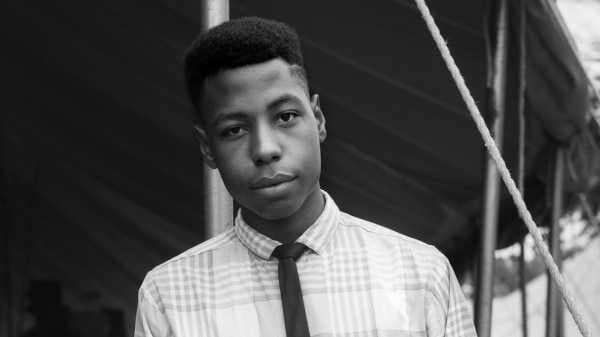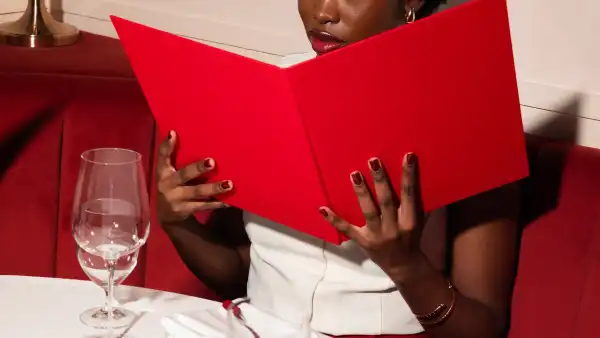
This piece was drawn from “Dawoud Bey: Seeing Deeply,” which is out in September from University of Texas Press.
Sometimes he would go to the library and dream. His body was not divisible from the aura of books. Though he didn’t know how, the books altered his bones. It had always felt that way. But instead of feeling overwhelmed by these literary ghosts he was comforted by them, even when he didn’t speak their language. (He was attracted to French literature but could enjoy it only in translation.) There, in the world of books, he found the world: Europe, Asia, Africa. He would never get to all that knowledge, all those words, but that thought didn’t overwhelm him, either: not knowing was part of who he was, and liked being, because it meant there was so much left to discover in this life, including all those things he would never know completely, like himself. He loved history—vapors of the past, in words. Sitting in the beautiful old library in Washington, D.C., his home town, a city a black writer named Edward P. Jones had made so much of with words, he knew that he would grow up to make something of his own world with words, too. He would describe his life: the tent shows, the singing, his body in an atmosphere of blackness, religion, belief, humanity. Looking at a Dawoud Bey photograph reminded him of a Jones story, too. He loved looking at Bey’s photographs, and reading Jones, sometimes simultaneously. In Jones’s work, chance encounters, changes in the weather, a little local fame, and sometimes love, can lead to momentous events.
In his masterful 2003 story “A Rich Man,” Jones’s protagonist’s need to believe in his own invincibility leads him into a world of tricksters and thwarted desire. What did he desire, looking at Bey’s photographs of a lady in her church hat, and a boy who resembled himself? Reading had taught him that he belonged to the world but the world would only see him in a limited way; to those prying eyes he was just another black boy, the product of a troubled South. So many thoughts about the South troubled him, made his heart beat faster under his light-colored shirt sometimes. Mama washed and taught him how to iron that shirt—he may be a target but the world would know he lived right, and had a Mama. Removing his pen and notebook from his little satchel—the clasp was hard to grab hold of, it was a hot day—he started to write about where he was just then: sitting smack in the “question” or “problem” of the American South, which D.C. was a part of, too. Comprising fourteen states with such meretricious names as Alabama, Kentucky, and Georgia, which recall spectacularly sad events—whipped Negroes, horse-rustling, and cotillions—the South, he thought, is like a landlocked island. No significant body of water separates it from the rest of the country, and yet, entering the South, you feel as though you have left what you know behind, including your sense of self. The place induces the amnesia that island life usually encourages. But since there’s no sea cutting you off, maybe it’s the air—the “tense air” that the writer Elizabeth Hardwick, a native Kentuckian, says is part of the region’s gestalt. Or perhaps it’s the tension of colored people and white people sharing a fraught but, on the surface, extremely civilized marriage, where domestic violence is not out of the question. There have been so many interpretations of the Southern atmosphere, and yet it’s still unreconstructed. Cell phones look strange in Oxford, Mississippi, but decay doesn’t. Girls in Atlanta have Coretta Scott King hairdos, and red earth caking their heels. Was any of this correct? And what about D.C., land of democracy, where he never, not once, felt treated in a democratic manner?
He opened a book of Dawoud Bey’s photographs at random. The images were of people of color, not unlike himself, and what he loved about the images was how the subjects held their own self-validation in their hands, their eyes, without being reduced to an ideology—you know, equating blackness with nobility, that kind of thing. It was such a relief, to see works of art made out of real lives. The pictures named a world he knew, even as he struggled to understand it more. And, even though the pictures hadn’t been shot in Ferguson, Staten Island, or Cincinnati, they shimmered with lives—black male lives. Generally, the language around that familiar and unfamiliar form has little to do with his humanity and more to do with the pressure points—guilt, remorse, and so on—his dead or living self aggravates. And, because he’s less interesting in the context of joy, the continued violence to his body. Under his white shirt, he knew something about that. And this: that the violence inflicted on the black male body didn’t stop there but extended, of course, to his community, which includes mothers and brothers and all the people who never considered him invisible or trivial or tragic or extinguishable to begin with.
In those family members’ eyes—the eyes of love, of complicated fraternity—he is a very real thing, attached to names given by parents or mothers or grandparents. Every name comes with a story dear to those who have bestowed it on the generations that come after, just as people attached great importance to Michael’s name, and Eric’s name, and Samuel’s name. In the library, he struggled to find the love and meaning in his own real name, since so many people said he was invisible. He’d once read that, years ago, Toni Morrison, when asked her opinion of Ralph Ellison’s “Invisible Man,” had said that, while she was unqualified in her praise of Ellison’s artistry, one question remained, hung fire: Who was he invisible to? Not to her. He was her brother, her father, her friend, and now, looking at Bey’s lens, he conveyed the satisfaction of being seen, which is a form of brotherhood and love, too.
Sourse: newyorker.com






